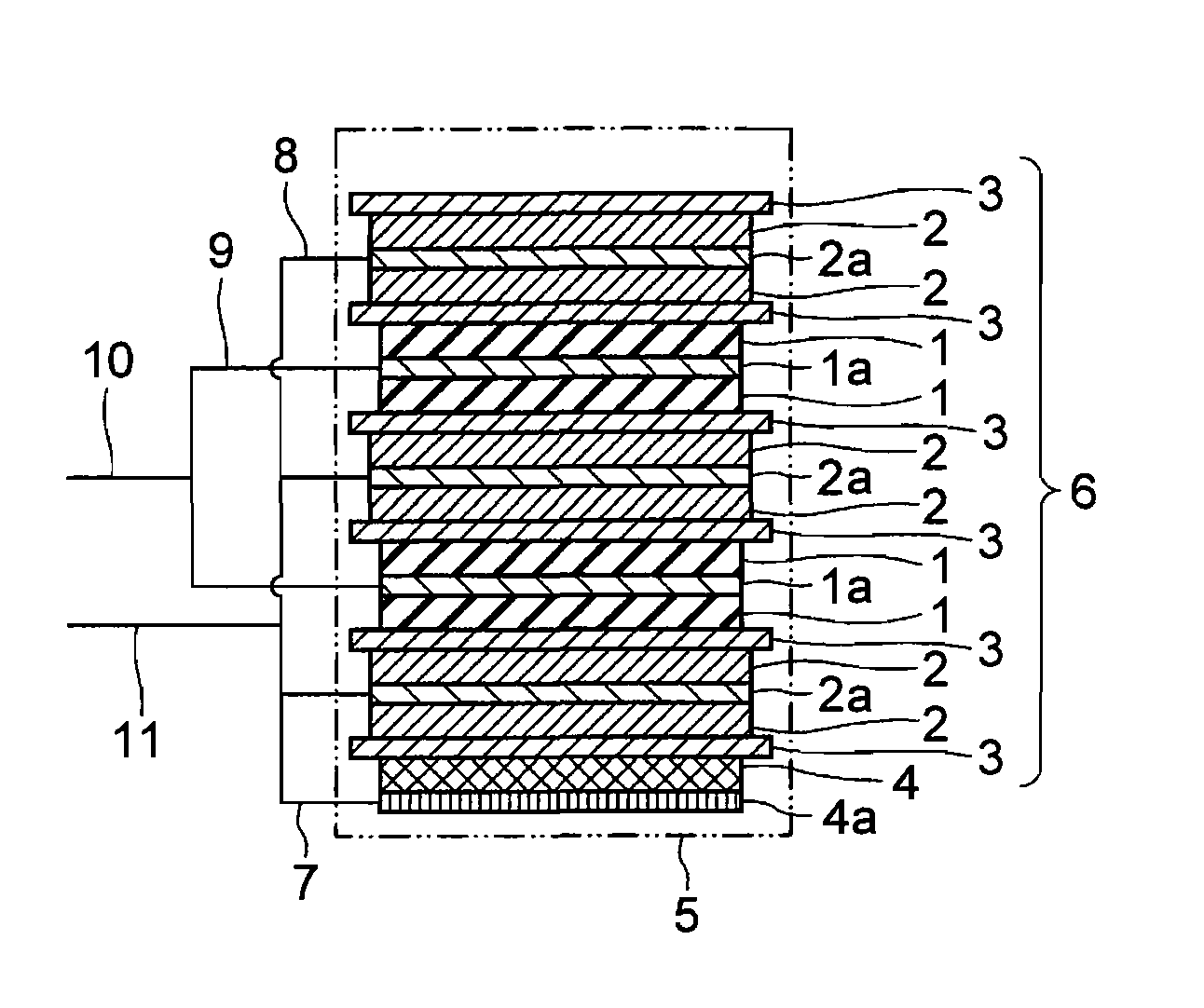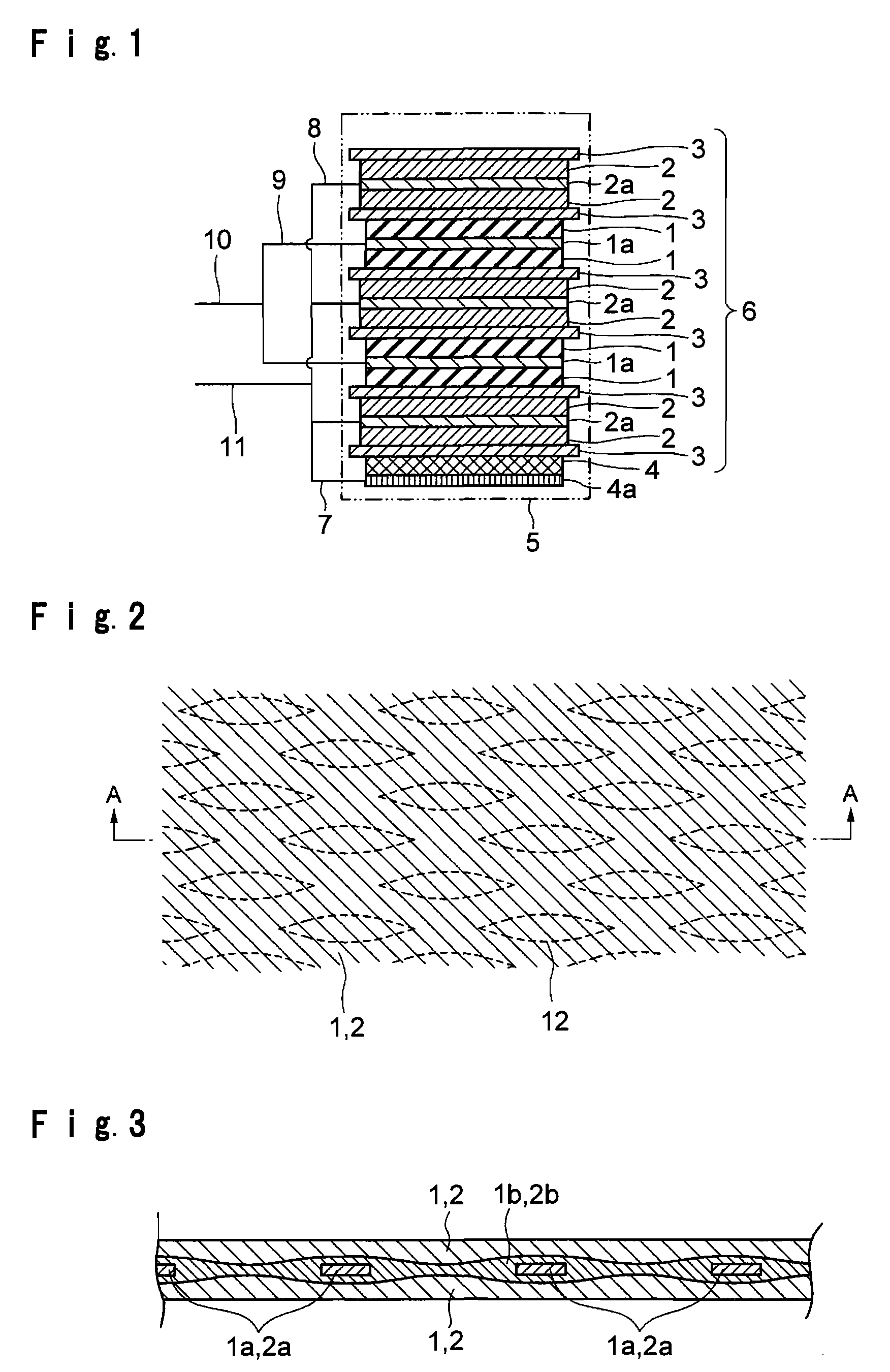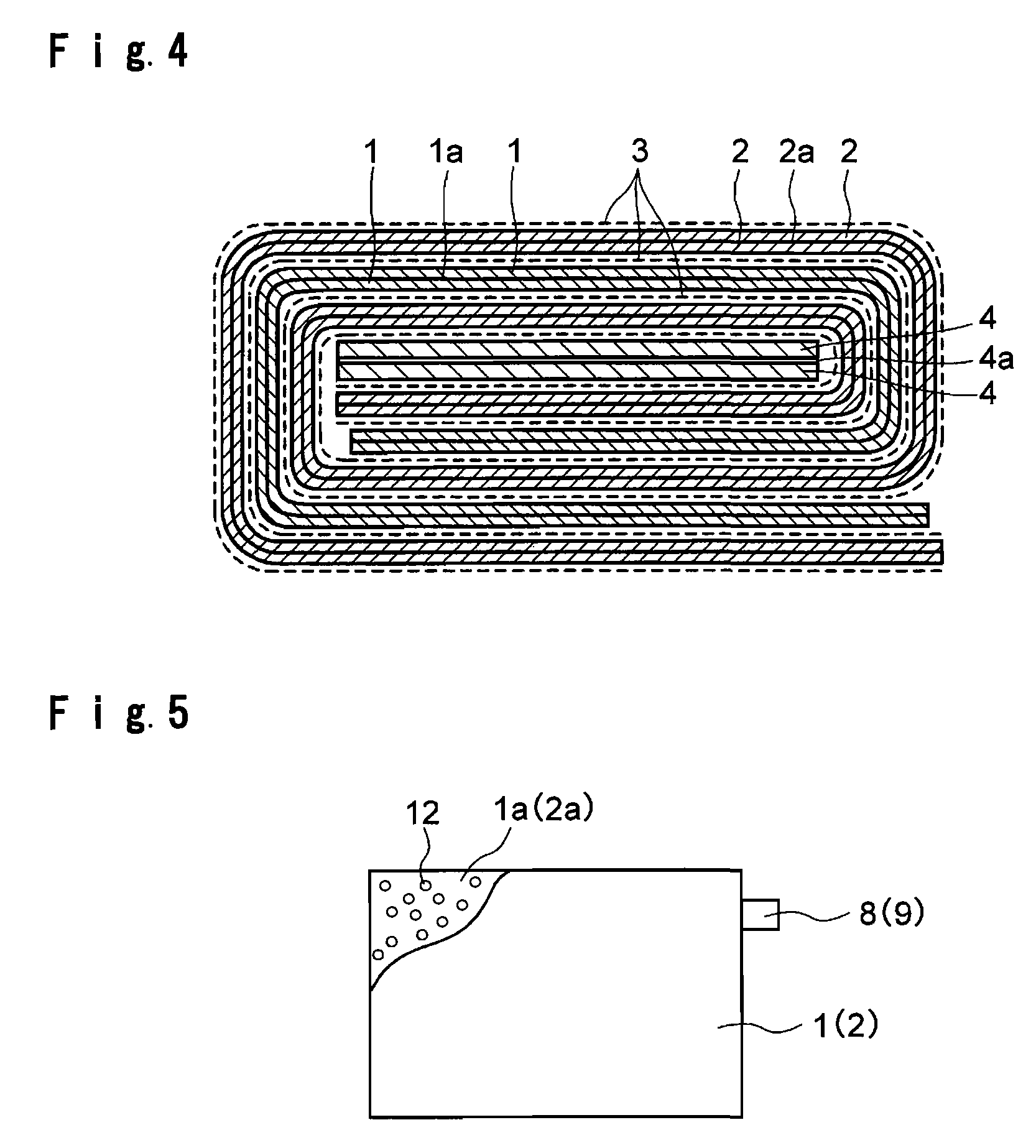Lithium ion capacitor
a technology of lithium ions and capacitors, applied in the field of lithium ion capacitors, can solve the problems of difficult to make lithium ions be uniformly supported by the entire negative electrode, doping requires a very long time, etc., and achieves the effects of preventing the increase of positive electrode potential, high capacitance, and high quality
- Summary
- Abstract
- Description
- Claims
- Application Information
AI Technical Summary
Benefits of technology
Problems solved by technology
Method used
Image
Examples
example 1
Process for Producing Negative Electrode 1
[0118]A phenol resin molded plate having a thickness of 0.5 mm was put in a Siliconit electric furnace and subjected to a heat treatment by increasing the temperature at a rate of 50° C. / hour to 500° C. and further at a rate of 10° C. / hour to 660° C. in a nitrogen atmosphere thereby to synthesize PAS. The PAS plate thus obtained was pulverized with a disk mill to obtain a PAS powder. The PAS powder had a H / C ratio of 0.21.
[0119]Then, 100 parts by weight of the above PAS powder and a solution having 10 parts by weight of a vinylidene polyfluoride powder dissolved in 80 parts by weight of N-methylpyrrolidone were sufficiently mixed to obtain a slurry. This slurry was applied on one surface of a copper foil having a thickness of 18 μm in an amount of about 7 mg / cm2 as a solid content, dried and pressed to obtain a PAS negative electrode 1.
Process for Producing Positive Electrode 1
[0120]100 Parts by weight of a commercial activated carbon powder...
examples 2 to 4
Preparation of Lithium Ion Capacitor
[0141]Electrode units were obtained in the same manner as Example 1 except that the areas of positive electrodes 2 of 312 μm thick were 5.6×7.1 cm2, 5.4×6.9 cm2 and 5.2×6.7 cm2 (except for terminal welding portions) respectively. The weights of positive electrode active material were 1.24 times, 1.16 times and 1.08 times respectively of the weight of negative electrode active material contained in each of the negative electrode areas facing to the positive electrodes. Further, the areas of positive electrode areas were 88%, 83% and 77% respectively of the negative electrode area. As lithium electrodes, ones each formed by press-bonding a lithium metal foil (82 μm, 6.0×7.5 cm2, corresponding to 200 mAh / g) to a stainless steel mesh of 80 μm thick, were employed, and such a lithium electrode was disposed at each of the upper and lower portions of each electrode unit to prepare tripolar electrode unit, and three cells of film type lithium ion capacito...
PUM
| Property | Measurement | Unit |
|---|---|---|
| porosity | aaaaa | aaaaa |
| pore diameter | aaaaa | aaaaa |
| positive electrode potential | aaaaa | aaaaa |
Abstract
Description
Claims
Application Information
 Login to View More
Login to View More - R&D
- Intellectual Property
- Life Sciences
- Materials
- Tech Scout
- Unparalleled Data Quality
- Higher Quality Content
- 60% Fewer Hallucinations
Browse by: Latest US Patents, China's latest patents, Technical Efficacy Thesaurus, Application Domain, Technology Topic, Popular Technical Reports.
© 2025 PatSnap. All rights reserved.Legal|Privacy policy|Modern Slavery Act Transparency Statement|Sitemap|About US| Contact US: help@patsnap.com



